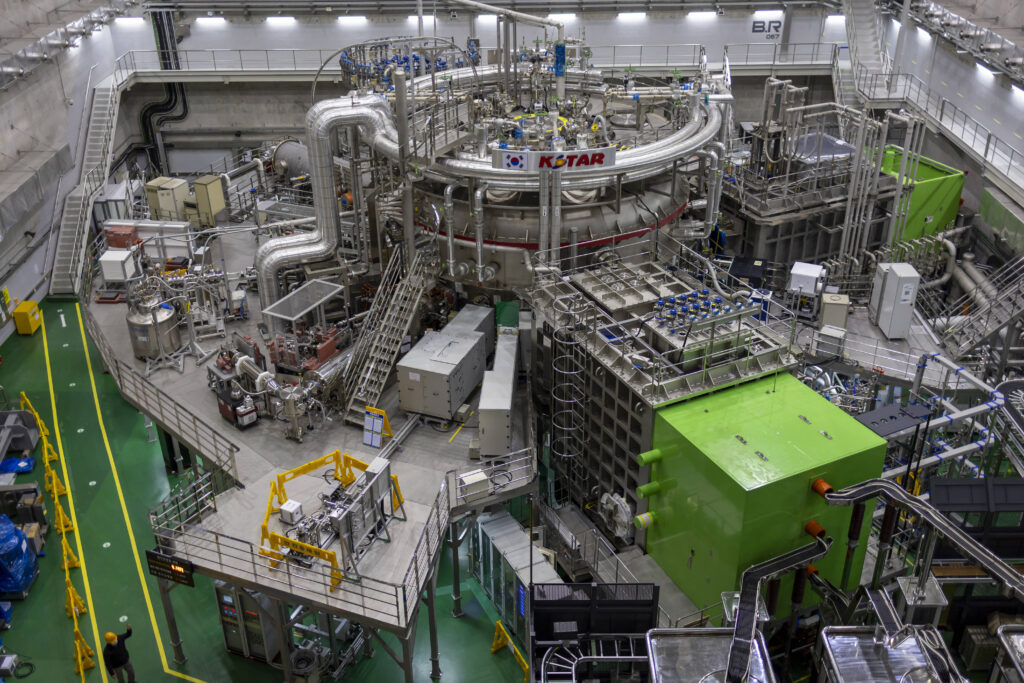- The Korean reactor reached 100 million degrees – seven times hotter than the core of the sun
- Temperature was sustained for 48 seconds – a new record
- Breakthrough could bring us closer to using nuclear fusion as an energy source

Scientists in Korea have broken the world temperature record when an ‘artificial sun’ reactor saw a ball of plasma reach a temperature of 100 million degrees for 48 seconds.
The temperature achieved by KSTAR at the Korea Institute of Fusion Energy earlier this year is nearly 20,000 times hotter than the surface of the sun.
Additionally, it achieved the high confinement mode for more than 100 seconds. This is significant because keeping the plasma stable is a crucial part of how nuclear fusion could be harnessed as a source of clean energy in the future.
Nuclear fusion could potentially offer near limitless energy that doesn’t require fossil fuels to be created, nor does it produce toxic waste, as traditional nuclear power does.
KSTAR is a superconducting tokamak that first reached 100 million degree plasma in 2018 and sustained plasma with an ion temperature of 100 million degrees for 30 seconds in 2021. The latest record is attributed to improvements in the performance of the plasma heating systems and advancements in high-temperature plasma operation and control techniques.
“Despite being the first experiment run in the environment of the new tungsten divertors, thorough hardware testing and campaign preparation enabled us to achieve results surpassing those of previous KSTAR records in a short period” said Dr. Si-Woo Yoon, director of the KSTAR Research Center. “To achieve the ultimate goal of KSTAR operation, we plan to sequentially enhance the performance of heating and current drive devices and also secure the core technologies required for long-pulse high performance plasma operations.”
The ultimate goal of KSTAR is to achieve 300 seconds of plasma operation with ion temperatures over 100 million degrees. To accomplish this goal, the KSTAR team has been focusing on essential research areas and improving device performance.